Review of the sweet and juicy melon variety “Slavia”
Farmers value the Slavia melon for its unpretentiousness and resistance to adverse weather conditions. The variety shows stable yields in drought and heat, and can withstand heavy rains and fogs without consequences. Ripens in mid-August. The melon also became famous for its taste.
Honey and sweet taste is one of the main advantages of the variety. Let's find out how to grow Slavia melon on your plot and what care it needs.
Description of the melon variety
The variety is late-ripening, the fruits ripen 90-100 days from the moment of planting. In hot and dry regions, melon has time to ripen in 2.5 months. Slavia is planted after the last frost - in mid-May. Gardeners use the seedling method.
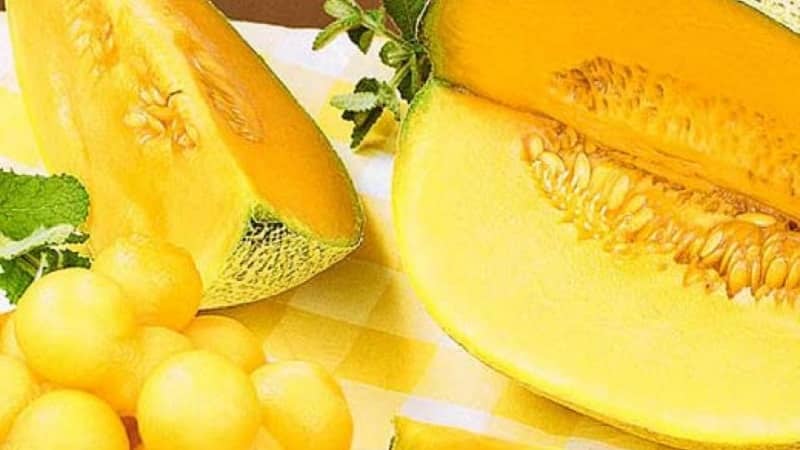
Distinctive features
The bushes are spreading, the length of one lash reaches about 2 m. The leaves are large and classic green. In the process of growing, Slavia needs timely formation. The variety is resistant to diseases and pests. The distinctive features of the melon are visible in the photo.
Composition, properties, benefits, calorie content
Melon contains vitamins A, B and C, carotene, calcium, magnesium and phosphorus. Eating melon in moderation improves immunity, improves the condition of hair, nails and skin. The pulp contains dietary fiber, which activates metabolism and normalizes the functioning of the gastrointestinal tract. 100 g contains only 36 kcal, so dietary and healthy sweets are prepared from melon.
Important! Due to the high sugar content, melon is not recommended for people with diabetes.
Fruit characteristics and yield
Slavia's fruits are round and yellow-green in color.. The surface is covered with mesh. The peel is dense, the flesh is light. The taste is sweet, honey. The weight of the fetus varies from 1 to 4 kg. Productivity - 14 kg per 1 sq. m.
How to choose fruits when purchasing
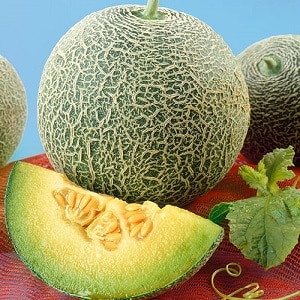 Melons of the Slavia variety are found both in chain stores and in markets. It is recommended to purchase them at the end of August or September — during this period, Slavia begins to ripen and reaches the highest levels of juiciness and ripeness.
Melons of the Slavia variety are found both in chain stores and in markets. It is recommended to purchase them at the end of August or September — during this period, Slavia begins to ripen and reaches the highest levels of juiciness and ripeness.
When choosing, pay attention to the following:
- The melon must be whole, without cracks or dents. Otherwise, there is a high probability that the fruit inside is rotten.
- A ripe harvest emits a pleasant honey aroma. Lack of smell or too strong aroma indicates that the melon is of poor quality.
- There should be a dull sound when tapped.
- A ripe melon should be firm and have a hard skin. Soft or too thick peel are signs of an overripe or underripe fruit.
- The place where the melon was stored. It is not recommended to purchase fruits that have been lying on the ground.
Read about other varieties of melon:
The most popular and beloved melon “Torpedo”
What is good about the Ethiopian melon and why is it worth growing?
Early ripe yellow melon “Fairy Tale F1”: cultivation and care
How to grow this variety yourself
Seedlings are prepared in mid-April. Select container, soil, seeds. Let's take a closer look at the stages of planting and caring for a variety.
Preparing and growing seedlings
Summer residents purchase Slavia seeds in specialized stores. When purchasing, check the integrity of the packaging and the expiration date of the seed. Before planting, the seeds are disinfected in a solution of potassium permanganate or aloe juice.They are placed in a fabric bag and immersed in liquid for 24 hours. Disinfection cannot be neglected; it kills dangerous pathogens on the surface of seeds.
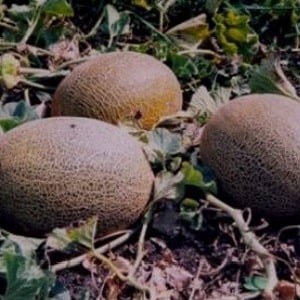 Grow seedlings in peat tablets or plastic cups. The tablets are made from environmentally friendly raw materials, are inexpensive and easy to use. There are cups in every home, but they are inconvenient for transplanting sprouts into open beds.
Grow seedlings in peat tablets or plastic cups. The tablets are made from environmentally friendly raw materials, are inexpensive and easy to use. There are cups in every home, but they are inconvenient for transplanting sprouts into open beds.
Used as soil soil from the garden or ready-made soil from the store. The container is filled 1/3 with earth, holes 1 cm deep are made in it. 1-2 seeds are placed in each, sprinkled with soil and watered generously with warm water.
Caring for seedlings consists of timely watering and fertilizing. Moisten the soil once every 5 days, use clean water at room temperature. Fertilize with organic and mineral fertilizers - manure, litter, ammonium nitrate, potassium salt. Fertilize once every 10 days, before watering. To accelerate development, seedlings are watered once with the growth stimulator “Kornevin”.
Important! Melon is a heat-loving crop. Grow seedlings on a sunny windowsill. The length of daylight is at least 12 hours. If the seedlings develop slowly, they are additionally illuminated using fluorescent lamps.
Landing in the ground
After 35-40 days from the moment of sowing, the seedlings are moved to open ground. For melons, choose spacious and sunny areas, with heated and nutritious soil.
The beds are prepared in advance: in the fall they are dug up to a depth of 20-30 cm, cleared of debris and weeds. In October, liquid organic fertilizers are applied - they will make the soil nutritious over the winter. At the beginning of April, the beds are dug up again, clearing them of leaves and plant debris.A mixture of sandy loam and loamy loose soils is suitable for Slavia.
Important! The best predecessors for planting melons are beans, greens, onions, cabbage, and corn. The crop is grown in the same place for no more than two years in a row.
Sprouts are planted according to the 80x60 pattern. Thickened planting leads to diseases, especially since the variety has long shoots. The sprouts are placed in holes with water, the base of the stem is patted with earth and sprinkled with purified river sand. In the first 2 weeks, the seedlings are covered with polyethylene or thin glass so that the heat-loving Slavia does not freeze. After 14 days, the protection is removed.
Variety care
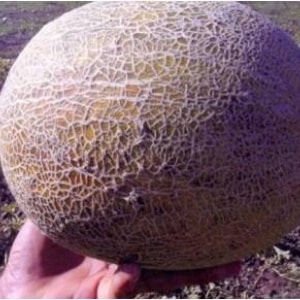 Water melon beds moderately; the plant does not like abundant moisture.. The water is preheated in the sun, and the stream is directed to the root. Water should not get on the stems and root collar. Watering frequency - 2-3 times a week. As soon as the first fruits appear, moisten the bushes once a week.
Water melon beds moderately; the plant does not like abundant moisture.. The water is preheated in the sun, and the stream is directed to the root. Water should not get on the stems and root collar. Watering frequency - 2-3 times a week. As soon as the first fruits appear, moisten the bushes once a week.
Fertilize the plant once every 2 weeks. It is recommended to alternate mineral and organic fertilizers. Summer residents feed the beds with:
- potassium permanganate solution;
- ammonium sulfate;
- potassium chloride;
- compost;
- chicken droppings;
- yeast.
Pay attention to loosening the beds. The procedure is carried out before watering. Loosening provides oxygen access to the roots and makes the soil airy. However, it is advised to be careful - loosening to a depth of more than 10 cm will injure the roots of the plant.
Features of cultivation and possible difficulties
Melon Slavia needs shaping. 3-4 leaves are formed on the main stem, after which the top is pinched and the short side branches are removed. With this method of formation, nutrients are used for the development of fruits, and not for the growth of green mass.Another forming method is trellis. Summer residents prepare in advance a frame 2 m high, to which the shoots are tied.
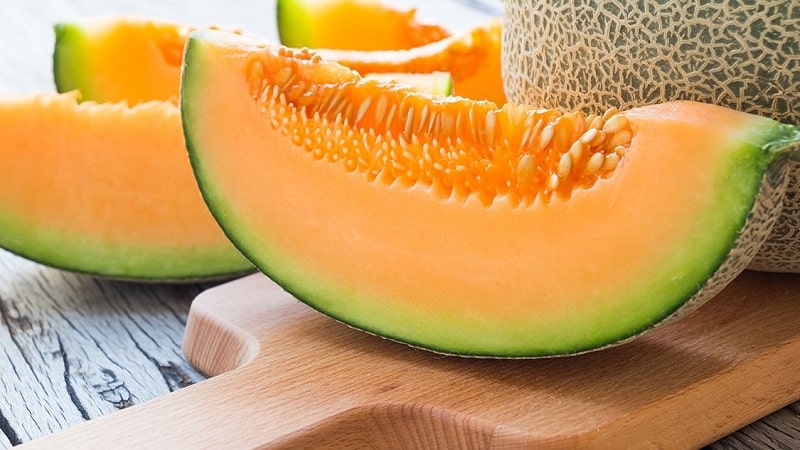
When applying fertilizing, it is important to follow the dosage. An excess of nitrogen leads to lush foliage and small fruits, an excess of calcium or phosphorus leads to drying out of the bushes. Gardeners correct the situation by watering and adding dry wood ash to the beds.
Diseases and pests characteristic of the variety
Diseases appear due to high humidity, sudden temperature changes, and improper care.. Powdery mildew occurs in melon beds: the virus covers the leaf blades and stems with a white coating. Powdery mildew appears due to an excess of mineral fertilizers and excessive watering. Prevention of the appearance of the virus is spraying with a whey solution and following the rules of crop rotation. The disease is treated with colloidal sulfur.
Another uninvited “guest” in the garden - fusarium wilt. As a result of the disease, the fruits become deformed, lose their elasticity and taste. Wilting appears during the fruiting stage. Occurs due to improper care. As a prophylaxis, a 40% formaldehyde solution is used.
Pests include mole crickets and wireworms. Insects destroy the roots and gnaw through the stem of the plant. They get rid of pests using the drugs “Prestige” or “Vofatox”.
Harvesting and application
The Slavia harvest is harvested in late August-early September.. When separating the fruits from the bushes, a stalk 5 cm long is left. Ripe melons are consumed fresh; they can only be stored for about a week. After picking, the fruits are wiped with a dry cloth and stored in a cool and dark place.
Made from melon jam, jams and jam. The pulp is dried and candied fruits are prepared for the winter.Melon is actively used for the production of muffins, cakes and other confectionery products. The aromatic and sweet pulp saturates them with a honey taste.
Advantages and disadvantages of the variety
Among the strengths of the variety are noted immunity to diseases and pests, heat resistance. Slavia has juicy and sweet pulp and is universal in use. The fruits can easily be transported over long distances.
Among the shortcomings noted need for formation. Not every novice gardener succeeds in forming a bush correctly the first time. Otherwise, the sweet melon Slavia has no flaws.
Conclusion
The attractive variety Slavia is suitable for growing in warm regions: the melon manages to ripen in 3 months. In regions with cool summers, ripening lasts 10-15 days longer.
To obtain a harvest, the beds are fed and watered, and bushes are formed when shoots appear. The fruits are harvested in early September, when they become fragrant and elastic. Used to prepare sweet desserts and fruit salads.